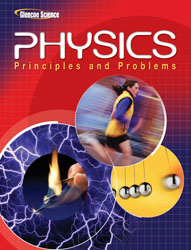1 E n = -13.6 eV(1/n 2 ), n is the __________.A) principal quantum number B) mass of the electron C) electron orbital radius D) energy of an electron in its orbit 2 A) radii B) energy levels C) energy packets D) orbits 3 A) 0.04 eV B) 2.76 eV C) 27.6 eV D) 0.4 eV 4 E 4 to E 3 in an excited hydrogen atom, the frequency of the emitted photon is 1.60×1014 Hz. What is its wavelength?A) 188 nm B) 1880 nm C) 941 nm D) 632 nm 5 A) 2.66×1019 Hz B) 4.01×1014 Hz C) 2.50×1014 Hz D) 5.86×10-14 Hz 6 A) photon emission B) emission spectrum C) composition spectrum D) absorption spectrum 7 A) emission spectrum B) spectral profile C) alpha level D) scintillation 8 A) 2.15 eV B) 1.40 eV C) 14.47 eV D) 2.43 eV 9 A) electron microscope B) spectroscope C) STM D) projector 10 E 5 of the hydrogen atom. Use h 2/(4? A242Kmq2 = 5.30×10-11 m. A) 1.33×10-10 m B) 1.91×10-9 m C) 1.91×10-10 m D) 1.33×10-9 m 11 n = 2 level. A photon with a wavelength of 297 nm strikes the atom and ionizes it. Assuming that the electron receives the excess energy from the ionization, what will be the kinetic energy of the electron in joules?A) 1.26×10-19 J B) 6.69×10-19 J C) 3.18×10-19 J D) 4.27×10-19 J 12 In the figure below, if an electron drops from an energy of -3.75 eV to -15 eV, what will be the wavelength of the emitted photon?
<a onClick="window.open('/olcweb/cgi/pluginpop.cgi?it=jpg::::/sites/dl/free/0078807220/617936/nz.JPG','popWin', 'width=NaN,height=NaN,resizable,scrollbars');" href="#"><img valign="absmiddle" height="16" width="16" border="0" src="/olcweb/styles/shared/linkicons/image.gif"> (9.0K)</a> A) 270 nm B) 66 nm C) 85 nm D) 110 nm 13 E 4 of the hydrogen atom. Use h 2 /(4&pi 2 Kmq 2 = 5.30×10-11 m).A) 1.91×10-9 m B) 8.50×10-9 m C) 8.50×10-10 m D) 1.33×10-10 m 14 A) 496 nm B) 250 nm C) 1270 nm D) 792 nm 15 A) greater than B) equal to C) less than D) dependent on 16 A) ground B) excited C) resting D) neutral 17 According to the figure below, how many lines would appear in the visible absorption spectrum for mercury?
<a onClick="window.open('/olcweb/cgi/pluginpop.cgi?it=jpg::::/sites/dl/free/0078807220/617936/oa.JPG','popWin', 'width=NaN,height=NaN,resizable,scrollbars');" href="#"><img valign="absmiddle" height="16" width="16" border="0" src="/olcweb/styles/shared/linkicons/image.gif"> (5.0K)</a> A) 5 B) 9 C) 16 D) 8 18 A) the electron's energy changes B) the electron reverses the direction of its orbit C) the electron completes one revolution in its orbit D) the electron's fixed orbit shifts 19 Use the figure below to answer this question. A friend shows you an emission spectrum that he says was produced by a light containing several gases, including hydrogen. Which of the following characteristics of the spectrum would disprove his statement?
<a onClick="window.open('/olcweb/cgi/pluginpop.cgi?it=jpg::::/sites/dl/free/0078807220/617936/ob.JPG','popWin', 'width=NaN,height=NaN,resizable,scrollbars');" href="#"><img valign="absmiddle" height="16" width="16" border="0" src="/olcweb/styles/shared/linkicons/image.gif"> (5.0K)</a> A) There are three yellow lines in the spectrum. B) There are no lines between 600 and 650 nm in the spectrum. C) There are two blue lines in the spectrum. D) There are no red lines in the spectrum. 20 A) spread evenly throughout B) concentrated in the outer shell C) orbiting around the central core D) concentrated in the nucleus 21 In the figure below, if hydrogen's ground state energy were -12 eV, what will be the wavelength of the photon emitted when an electron drops from the 1st excited state to the ground?
<a onClick="window.open('/olcweb/cgi/pluginpop.cgi?it=jpg::::/sites/dl/free/0078807220/617936/oc.JPG','popWin', 'width=NaN,height=NaN,resizable,scrollbars');" href="#"><img valign="absmiddle" height="16" width="16" border="0" src="/olcweb/styles/shared/linkicons/image.gif"> (35.0K)</a> A) 11000 nm B) 140 nm C) 5900 nm D) 78 nm 22 E 6 of the hydrogen atom. Use h 2 /(4π 2 Kmq2 = 5.30×10-11 m.A) 1.91×10-9 m B) 1.33×10-10 m C) 1.91×10-10 m D) 1.33×10-9 m 23 E 5 to E 4 in an excited hydrogen atom.A) 5.86×1014 Hz B) 7.39×1013 Hz C) 4.89×1013 Hz D) 3.55×1014 Hz 24 A) Fraunhofer B) Emitted C) Radiated D) Omission 25 Using the emission spectra below, determine which among the following colors should appear the most brightly in the emission spectrum for the Sun.
<a onClick="window.open('/olcweb/cgi/pluginpop.cgi?it=jpg::::/sites/dl/free/0078807220/617936/ob.JPG','popWin', 'width=NaN,height=NaN,resizable,scrollbars');" href="#"><img valign="absmiddle" height="16" width="16" border="0" src="/olcweb/styles/shared/linkicons/image.gif"> (5.0K)</a> A) dark blue B) light purple C) yellow D) orange 26 A) excited state B) quantum level C) ground state D) orbit 27 A) diffraction grating B) laser C) spectroscope D) semiconductor 28 A) 2πrh = nλ B) r /λ = h /2π C) nλ = 2πr D) 2n = λπr 29 A) emission region B) electron radius C) electron cloud D) quantum model 30 A) Wave dynamics B) Electromagnetism C) Quantum mechanics D) Thermodynamics














